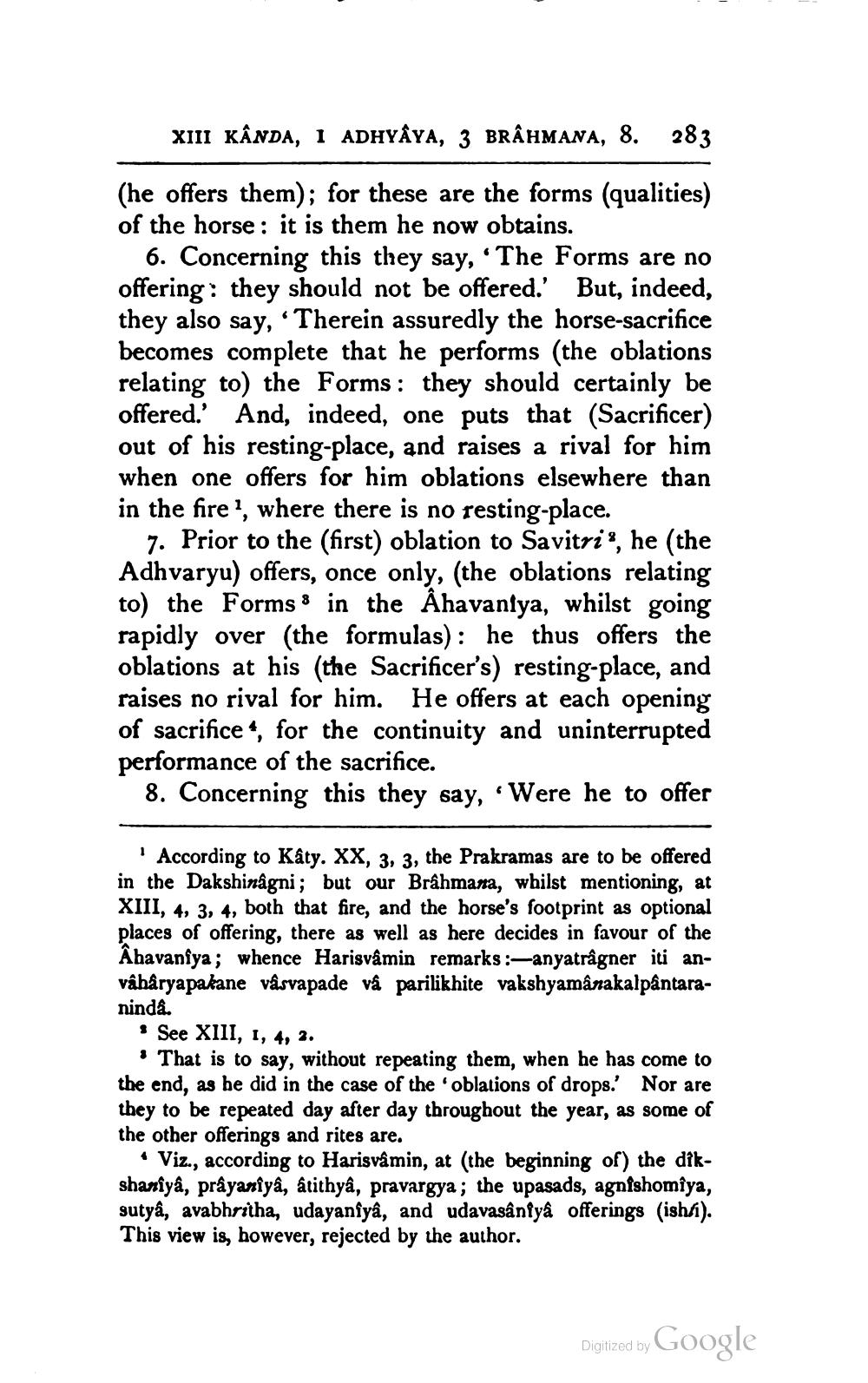________________
XIII KÂNDA, 1 ADHYÂYA, 3 BRAHMANA, 8. 283
(he offers them); for these are the forms (qualities) of the horse: it is them he now obtains.
6. Concerning this they say, 'The Forms are no offering: they should not be offered. But, indeed, they also say, “Therein assuredly the horse-sacrifice becomes complete that he performs (the oblations relating to) the Forms: they should certainly be offered.' And, indeed, one puts that (Sacrificer) out of his resting-place, and raises a rival for him when one offers for him oblations elsewhere than in the fire ?, where there is no resting-place.
7. Prior to the (first) oblation to Savitris, he (the Adhvaryu) offers, once only, (the oblations relating to) the Forms 8 in the Åhavaniya, whilst going rapidly over the formulas): he thus offers the oblations at his (the Sacrificer's) resting-place, and raises no rival for him. He offers at each opening of sacrifice 4, for the continuity and uninterrupted performance of the sacrifice.
8. Concerning this they say, "Were he to offer
According to Katy. XX, 3, 3, the Prakramas are to be offered in the Dakshinagni; but our Brahmana, whilst mentioning, at XIII, 4, 3, 4, both that fire, and the horse's footprint as optional places of offering, there as well as here decides in favour of the Abavaniya; whence Harisvâmin remarks :-anyatrågner iti anvâhåryapakane vâsvapade vâ parilikhite vakshyamânakalpântaranindå.
• See XIII, 1, 4, 2.
"That is to say, without repeating them, when he has come to the end, as he did in the case of the oblations of drops. Nor are they to be repeated day after day throughout the year, as some of the other offerings and rites are.
• Viz., according to Harisvâmin, at (the beginning of the dikshariyâ, prayariya, atithyâ, pravargya; the upasads, agnishomiya, sutya, avabhritha, udayanîyâ, and udavasântya offerings (ishi). This view is, however, rejected by the author.
Digitized by Google




